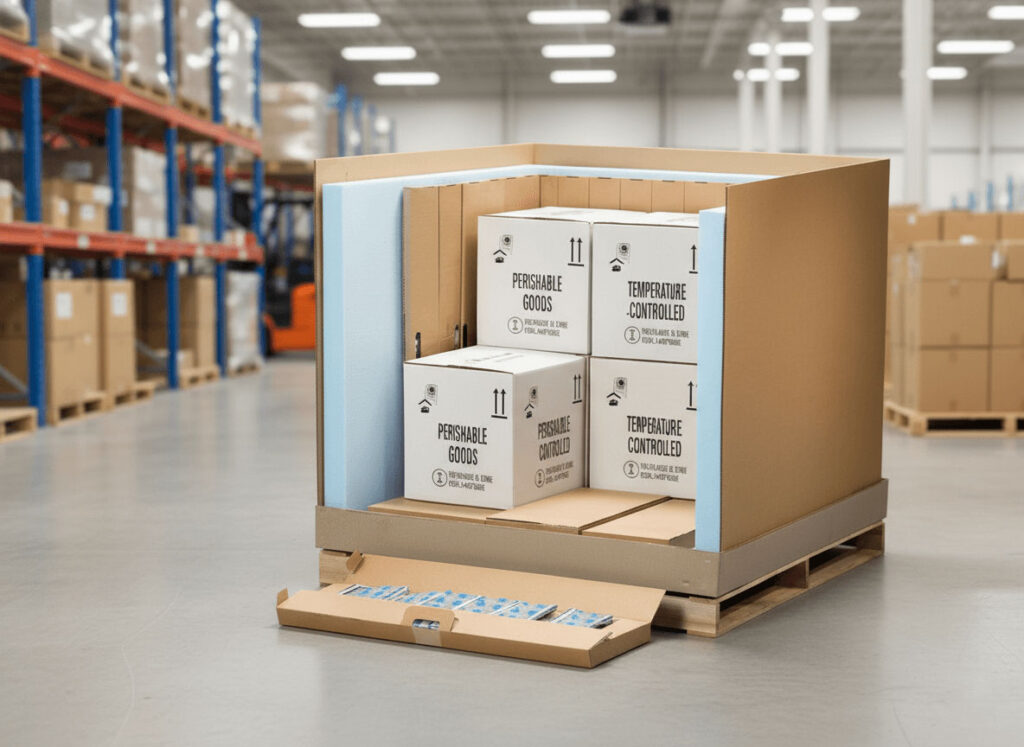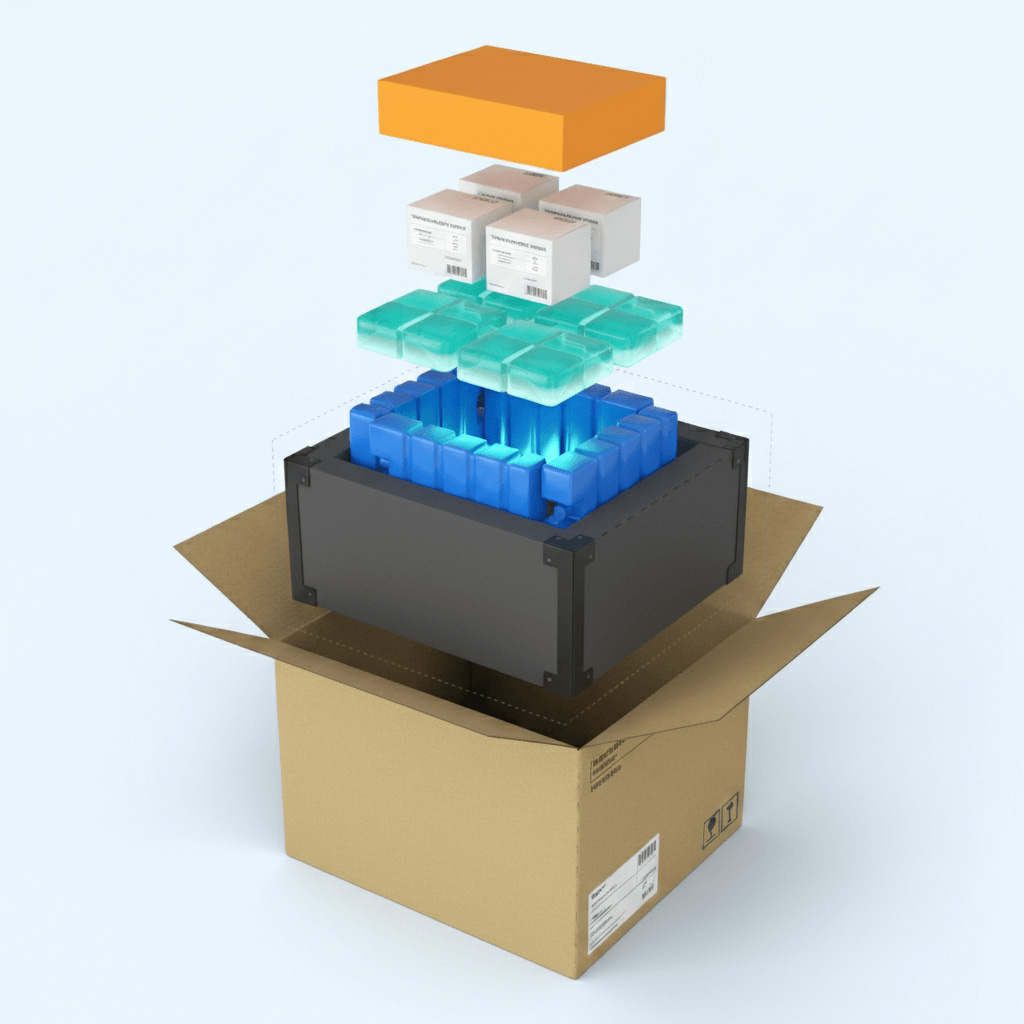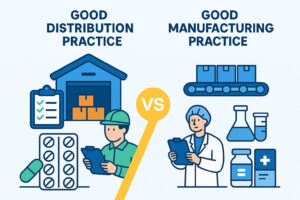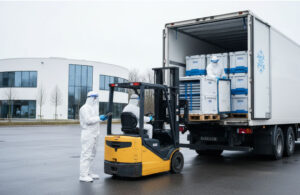Pharmaceutical Packaging Solutions: Your Guide to Choosing Between Active and Passive Systems
Transporting pharmaceuticals from the manufacturer to the pharmacy or hospital always comes with challenges, such as temperature fluctuations, humidity, and handling delays. This is where pharmaceutical packaging steps in—not just as a protective shell but as a vital part of maintaining product integrity, safety, and efficacy. For companies navigating this complex landscape, understanding the difference between active and passive packaging systems is essential. And this is what we’ll delve into in this article.
Understanding Pharmaceutical Packaging
Pharma packaging is designed to safeguard drugs from external factors that could compromise quality. It encompasses everything from the primary packaging, like blister packs and bottles, to secondary packaging, including insulated boxes and pallets for transport. Proper medicine packaging ensures that each dose remains effective until it reaches the patient, reducing the risk of contamination or spoilage.
Pharmaceutical packaging is not just about protection; it’s about compliance. Regulatory bodies worldwide enforce strict guidelines to ensure that all packaging for pharmaceuticals adheres to standards that maintain drug safety. This has made the role of pharmaceutical packaging companies more critical than ever—they provide solutions that guarantee temperature control, traceability, and compliance throughout the supply chain.
Active vs. Passive Pharmaceutical Packaging
When it comes to shipping sensitive medicines, two main types of packaging systems are commonly used: active and passive.
Active Packaging Systems
Modern cold chain logistics isn’t just about keeping products in a refrigerated truck—it’s about real-time visibility and predictive management. Digitally-enabled logistics companies deploy advanced tools such as GPS tracking, IoT sensors, and temperature-monitoring systems.

Active packaging systems use powered technologies to actively regulate temperature and environmental conditions during transit. They often require ongoing monitoring and occasional recharging to maintain consistent performance.
Examples include:
- Powered systems (e.g., electricity and compressors) that actively maintain temperature
- Refrigerated containers or shippers equipped with battery or plug-in cooling units
- Electronic temperature controllers that maintain precise set temperatures throughout transit
- Real-time monitoring systems that provide continuous tracking and instant alerts
The advantage of active systems is their ability to maintain precise temperature control over extended periods, even under challenging conditions. This makes them ideal for long-distance or international shipments of high-value biologics, vaccines, or gene therapies. They also reduce the risk of product loss due to temperature excursions, which is a critical consideration in the pharmaceutical industry.
However, the downside is higher cost and operational complexity. Active systems require power sources, maintenance, and trained personnel to manage logistics. Despite this, for certain pharmaceuticals, the reliability and compliance benefits outweigh these challenges.
Passive Packaging Systems
Passive packaging systems rely on insulation and pre-conditioned elements to maintain temperature without any external power. They are simple, cost-effective, and ideal for short to medium-duration shipments.
Common examples include:
- Insulated boxes made of foam or corrugated materials
- Gel packs, PCM packs, or dry ice to absorb or maintain temperature
- Vacuum insulation panels (VIPs) to enhance thermal resistance
The key advantage of passive systems is their simplicity—they don’t require power and are easy to transport. They are best suited for shipments lasting from a few hours up to several days, where maintaining a stable temperature range is critical. Because of this, passive packaging is widely used for vaccines, biologics, and other temperature-sensitive medicines that require consistent conditions during transit.
However, passive systems have limitations. They require careful pre-conditioning, precise calculation of thermal loads, and rigorous monitoring to ensure that temperatures remain within safe limits. For long-duration shipments or highly sensitive medicines, passive solutions may not always provide the required reliability.

Choosing the Right System
Are you torn between active and passive systems for your pharma cargo? Choosing the right pharmaceutical packaging isn’t just a logistical decision—it directly impacts product integrity, patient safety, and regulatory compliance. The right solution depends on factors such as:
- Product Sensitivity: Highly temperature-sensitive drugs may require active packaging, while less sensitive items can be shipped passively.
- Duration of Shipment: Longer transport times often favor active systems for consistent temperature control.
- Cost Considerations: Passive packaging is typically more economical, but potential losses due to temperature excursions must be factored in.
- Regulatory Requirements: Some pharmaceuticals are subject to strict pharmaceutical packaging standards that may dictate the type of system used.
- Environmental Conditions: Extreme climates may necessitate active packaging to ensure medicines arrive safe and effective.
By weighing these factors, pharmaceutical companies like yours can select the system that best preserves the integrity of your products while remaining cost-efficient.
Innovations in Pharmaceutical Packaging
The pharma industry is constantly evolving, with new solutions aimed at improving efficiency and patient safety. Some notable trends include:
- Smart packaging with embedded sensors to monitor temperature, humidity, and shocks in real time.
- Sustainable materials that reduce environmental impact while maintaining thermal efficiency.
- Modular systems that allow flexibility for different shipment sizes and types of pharmaceuticals.
These innovations are helping pharmaceutical packaging companies provide more reliable and eco-friendly solutions, ensuring that medicines are not just delivered—they arrive in perfect condition.
The Role of Professional Pharma Packaging Providers
Working with experienced pharmaceutical packaging companies is critical. These providers understand regulatory requirements, have expertise in both active and passive systems, and can design customized solutions for specific medicines. By leveraging their knowledge, manufacturers, distributors, and logistics partners can reduce risk, prevent losses, and ensure patient safety.
Whether it’s selecting the right packaging for pharmaceuticals, choosing the correct thermal materials, or implementing monitoring systems, professional partners make a tangible difference in maintaining product quality throughout the supply chain.
Partner with TFI for Pharma Packaging Solutions
In the end, choosing between active and passive pharma packaging systems is not just about cost or convenience—it’s about responsibility. Medicines are only effective if they reach patients in the condition they were intended for. Thoughtful, compliant, and well-planned packaging guarantees that patients receive safe, effective treatment every time.
If you’re seeking a reliable, GDP-compliant logistics provider that offers innovative pharmaceutical packaging solutions, you can never go wrong with TFI. From temperature-sensitive vaccines to delicate biologics, we offer tailored solutions that safeguard your product’s integrity while adhering to global standards. Moreover, we leverage our cold chain management, customs clearance, regulatory compliance, global freight forwarding, and validated transportation capabilities to ensure your medicines reach their destination safely, efficiently, and on time—no matter where in the world they need to go.
Facing some challenges with your pharma packaging and transport? Get in touch with our in-house experts today!



